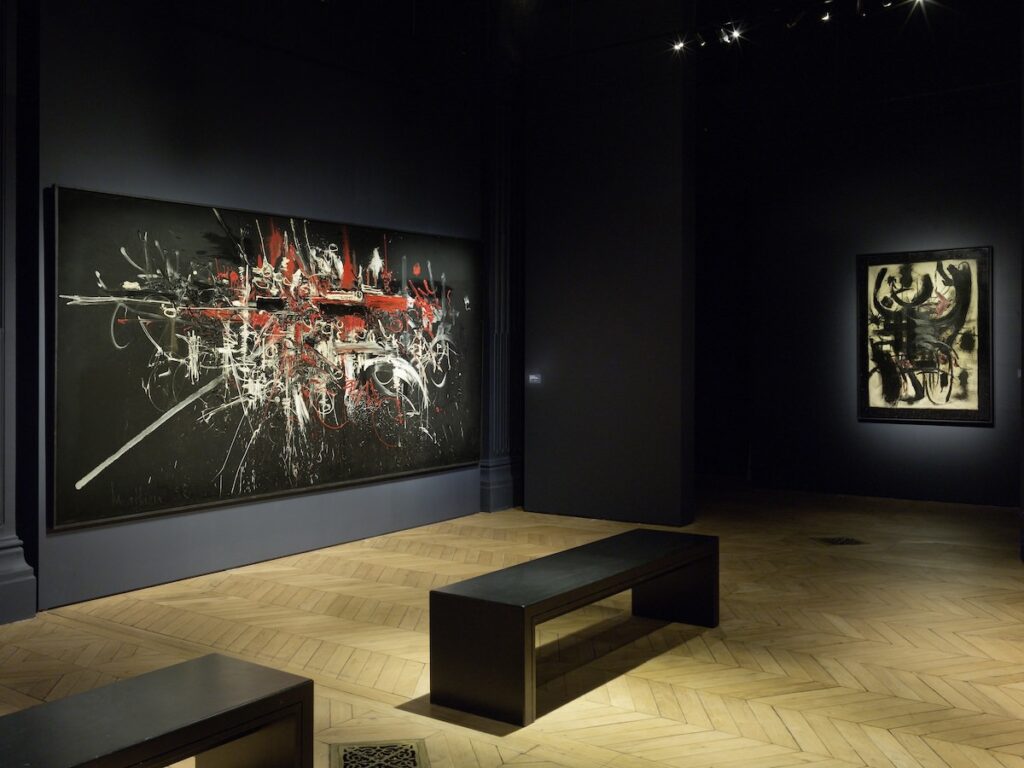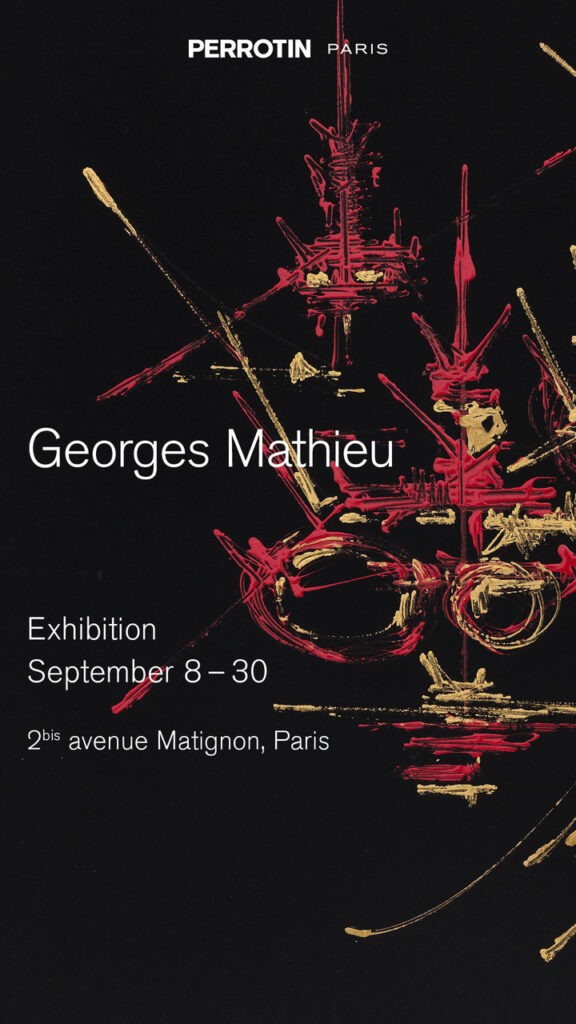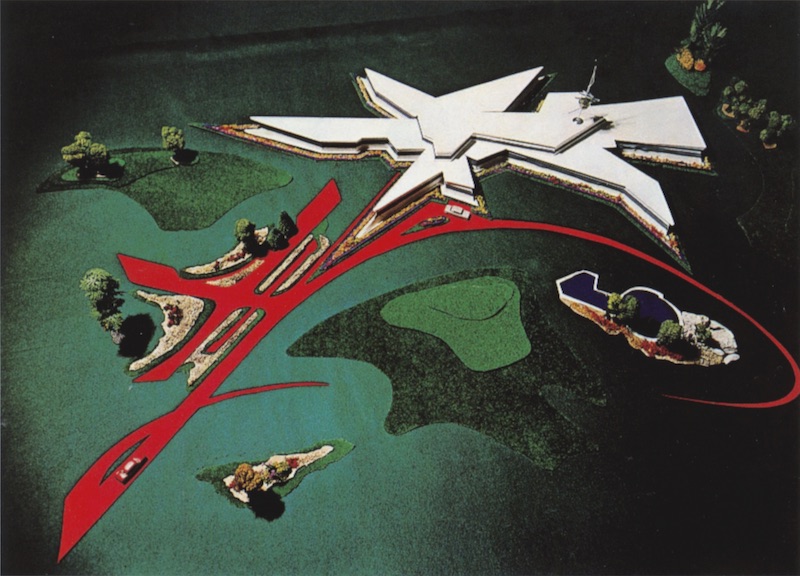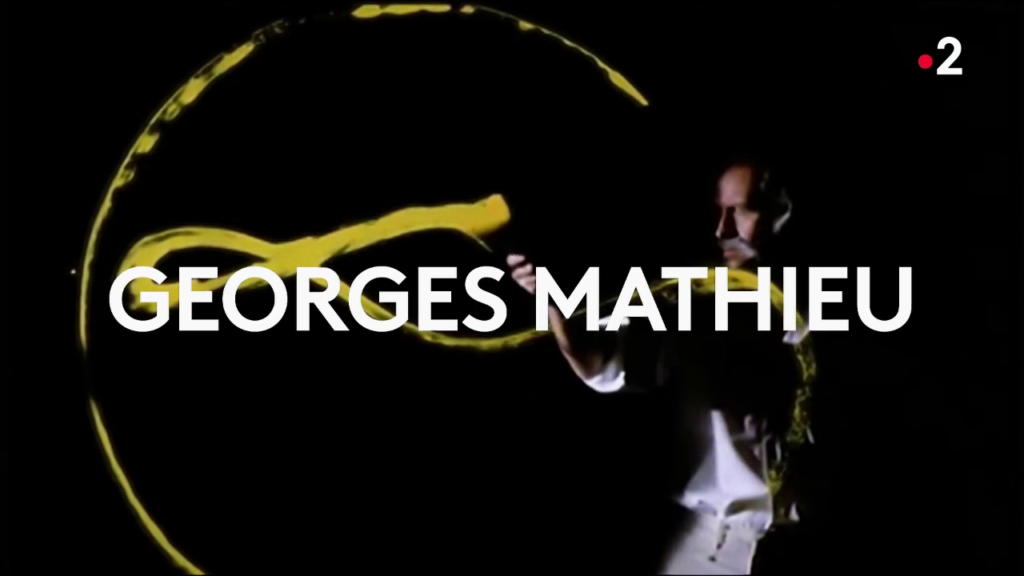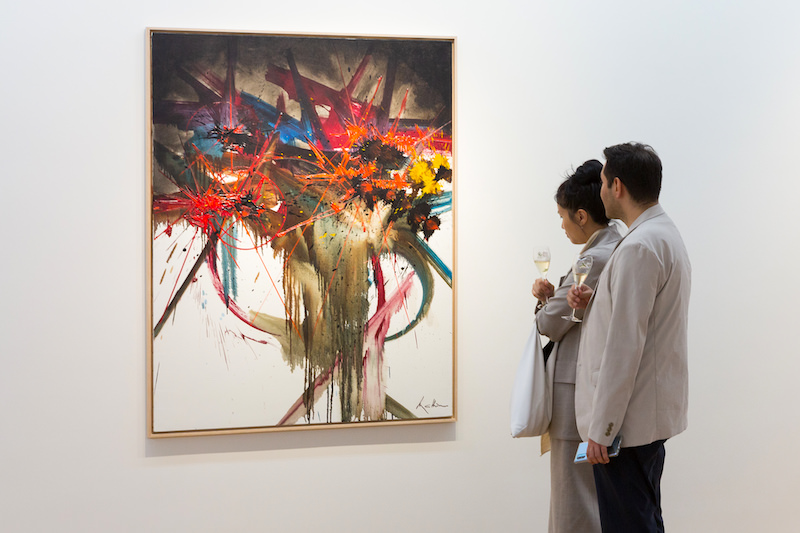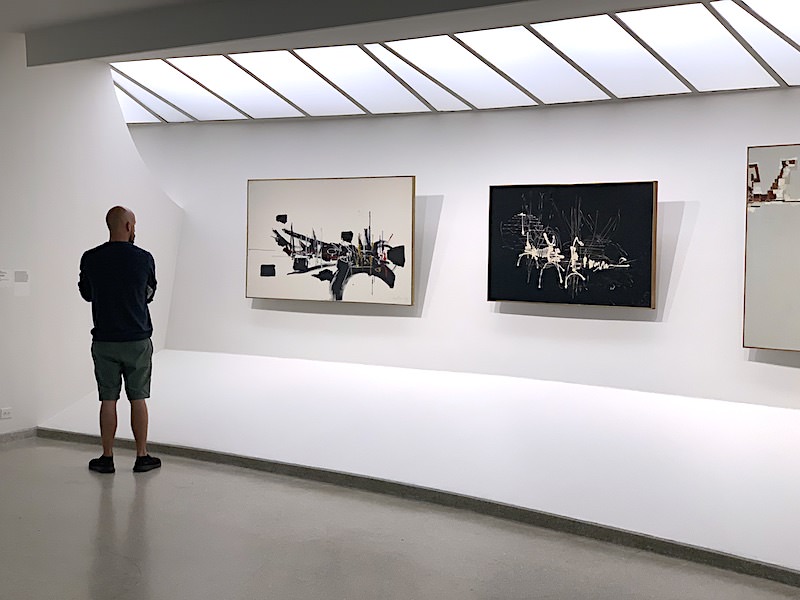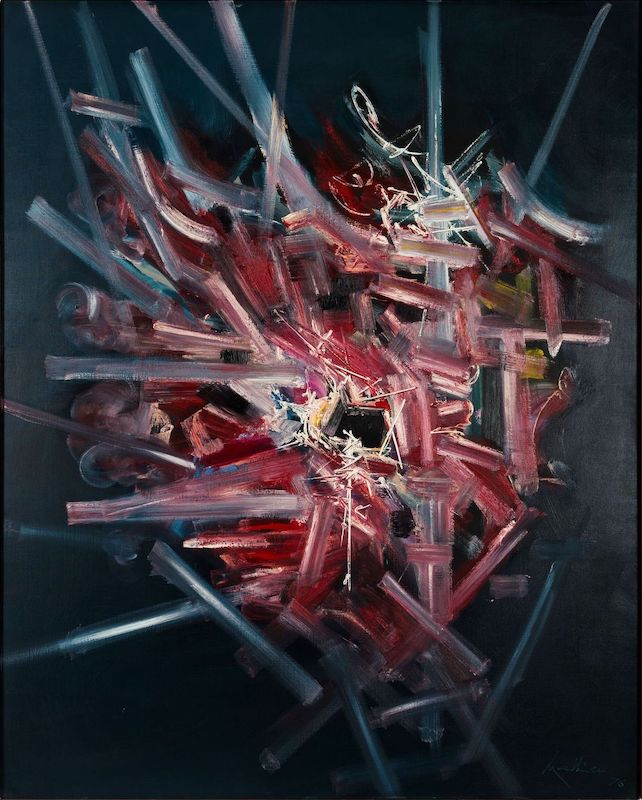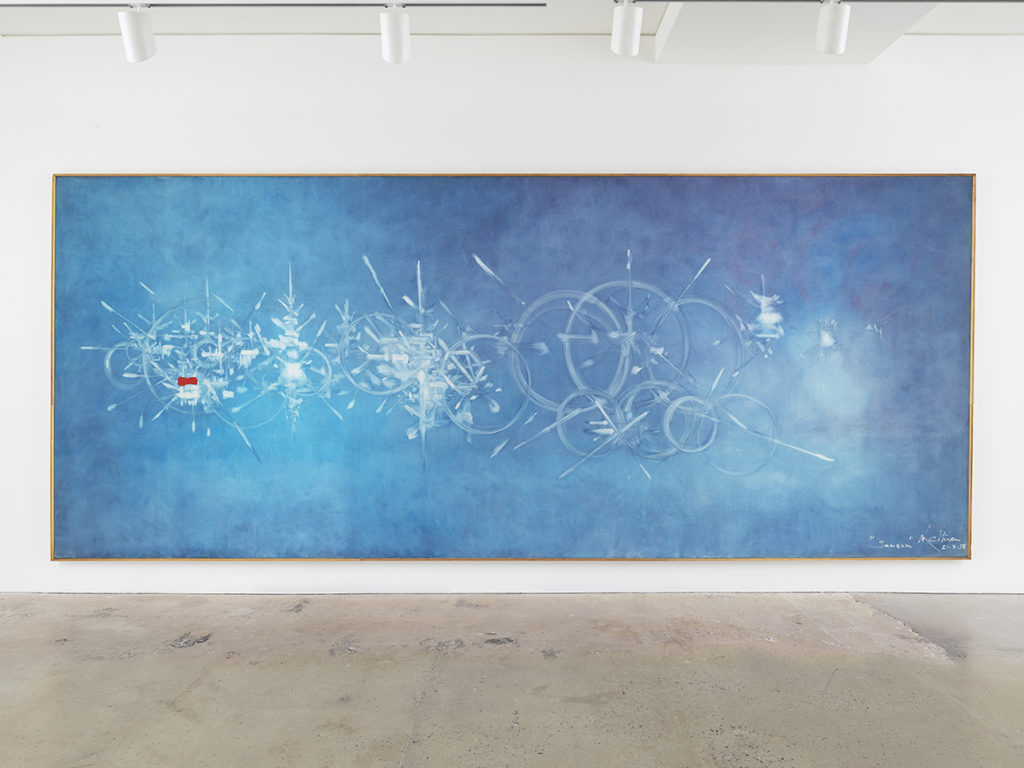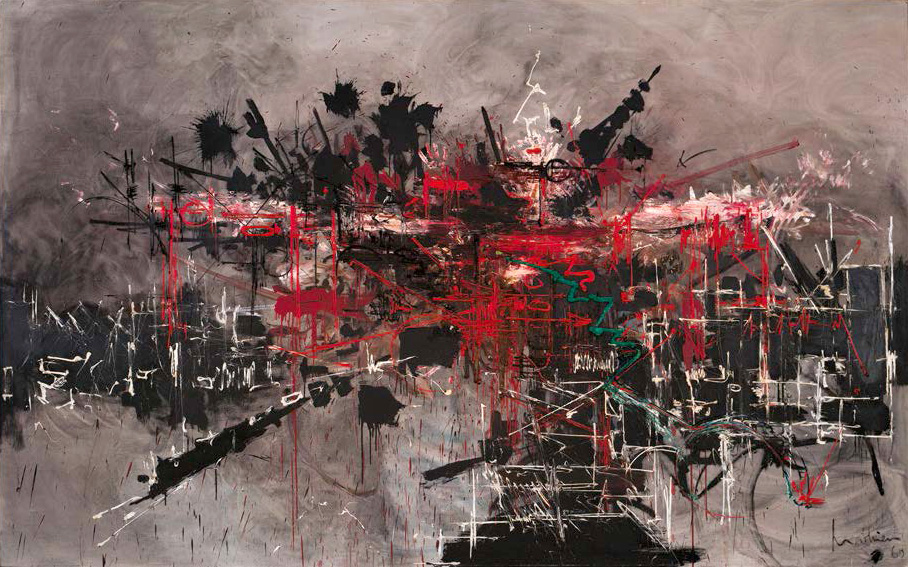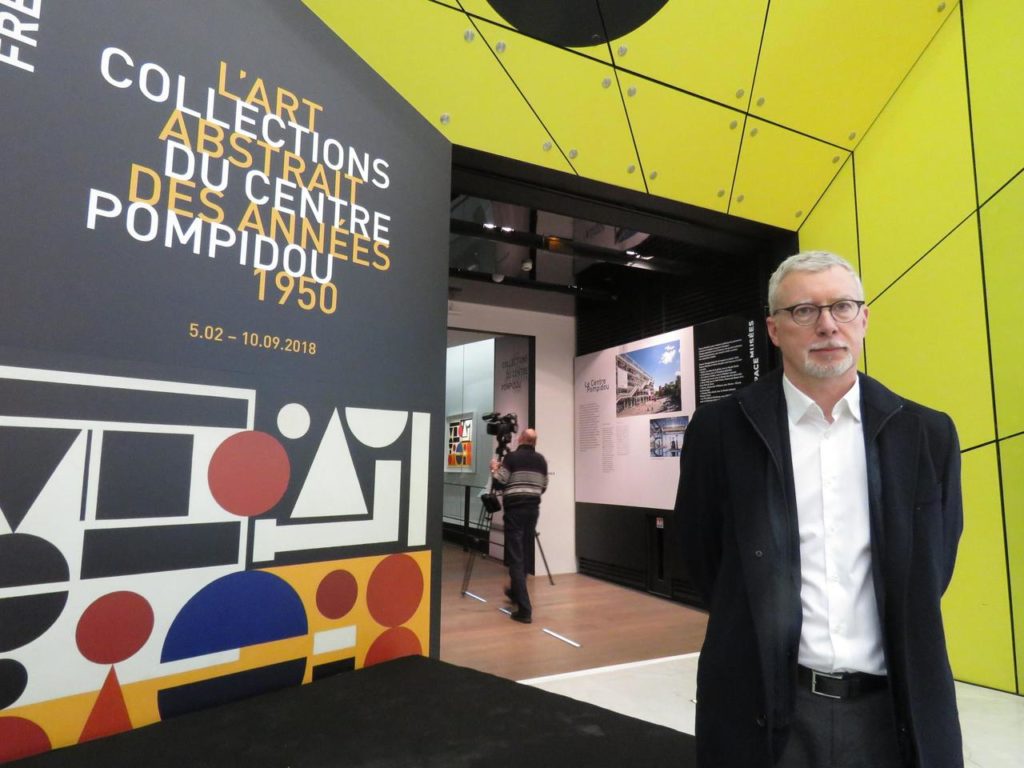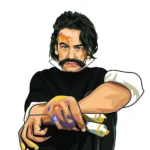Here is an excerpt from Stéphane Corréard’s chronicle in Arts Magazine, who recognizes the “capital importance of his creative, theoretical, and strategic importance between 1944 and 1964”.
Autodidact, globe-trotter and polyglot, Mathieu came to the visual arts via philosophy. Indeed, he places abstract painting right away into radically new perspectives: which is an abandonment not only of figural representation, but also of the geometry inherited from perspectivist illusion, an invention of action painting and even of the happening, highlighting rapid execution and the seismographic qualities of the gesture, the elaboration of signs which “precede their meaning”. Developed in conference meetings and in books like De l’abstrait au possible (From the Abstract to the Possible) and Au-delà du tachisme (Beyond Tachism), these conceptions quickly became “markers” for a whole new generation of artists who wanted to “start from zero” (to deploy the expression coined by Éric de Chassey and Sylvie Ramond for their eponymous exhibition at the Museum of Fine Arts of Lyon in 2009).
Atlan, Wols, but also Henri Michaux, who prompted his interest in Zen, or Simon Hantaï (with whom in 1957 he organized ceremonies commemorating the second conviction of Siger de Brabant): Georges Mathieu was such a strong and faithful incarnation of this “new movement” that he became its leader. In April, 1948, the “HWPSMTB” collective exhibition (acronym for the participants: Hartung, Wols, Picabia, Stahly, Mathieu, Tapié and Bryen), which he assembled at the Colette Allendy Gallery, marked the official birth of Art Informel. Six months later at the Galerie du Montparnasse, he brought these artists face to face with Arshile Gorky, Willem de Kooning, Jackson Pollock, Ad Reinhardt, Mark Rothko and Mark Tobey. As historic as they are, these events are just as inconsistent with the hypothesis that the Paris School was completely withdrawn into itself as it is with the image of Georges Mathieu as some royalist, reactionary, and nationalist.
Fifty years after the “humiliation” endured by the French artists at La Biennale di Venezia, when Roger Bissière was passed over in favor of Robert Rauschenberg for the Golden Lion following a masterful lobbying operation led by Léo Castelli, the “competition between legends” can fade into the background and let the true history of the art emerge from the fog of misconception. While part of contemporary art (the most visible and hegemonic, not just in the financial economy, but also in the libidinal economy of the image) has become a cultural industry like any other, it is delectable or painful, according to one’s temperament, to recall how many stars of the arts scene in the 1950s and 1960s in France, like Mathieu, but also Arman, Bernard Buffet, César and Victor Vasarely have been discredited for the very reason of their popular success, by the same conservators or guardians of the temple who today sing the praises of the likes of Jeff Koons or Takashi Murakami, Damien Hirst or Olafur Eliasson, and whose unbridled policy of derivative production contaminates and even supplants the initial creativity.
On this score, however, Georges Mathieu’s career could be the envy of many, having placed so many indelible images into the collective imaginary, like Air France posters (1967, more than a million copies sold), the ten franc coin (1974), the Antenne 2 logo (1975), and the stamp commemorating the Appeal of 18 June 1940 and the death of General de Gaulle (1980). What’s more, he is the artist who could foresee the potential of the work of art to be the catalyst of forms of existence as yet unknown, put into practice with the architect Jacques Couëlle in the conception of the new village of Castellaras, in the Var region, and more than anything in the “total” project of the Usine-Etoile, projected for 1967 and inaugurated in 1972 in Fontenay-le-Comte. With 1500 square meters of surface area spread out over seven tapered points and embracing a 150-meter long production line, together creating a striking, aerial, and ultra-dynamic, even futuristic whole. The building has a unique elegance that is coyly anti-rationalist (and that is no easy feat for a factory), in the image of its creator, about whom the great conservator François Mathey contended that “he was the first to denounce the sclerosis of a comfortable culture, and the first to thrash the appropriated myths which conditioned the vision and the reason of the West.“
Georges Mathieu passed away in June 2012. His work is represented exclusively and globally by Perrotin.



